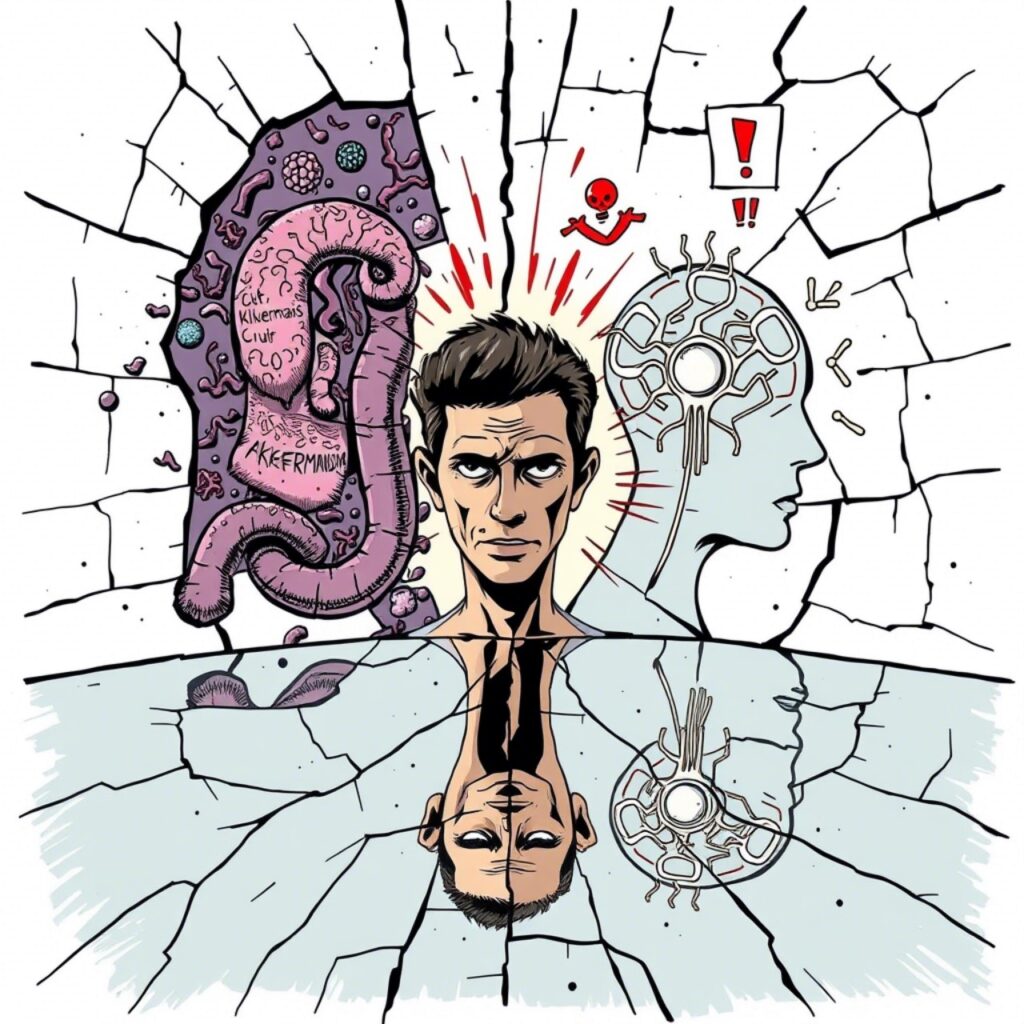Purinergic Chaos: Why the Body Thinks It’s Still Under Attack (And How That Blocks Connection)

Purinergic Chaos: Why the Body Thinks It’s Still Under Attack (And How That Blocks Connection)
There is a language older than speech.
A cellular Morse code tapped out in bursts of ATP.
In the beginning, this was survival: when cells are damaged or threatened, they release ATP into the extracellular space—a red flare shot into the sky. It alerts nearby immune cells, tightens barriers, triggers inflammation, halts digestion, heightens vigilance. This is purinergic signaling: a deeply ancient, non-verbal system for sounding the alarm.
But what happens when the flare never dies out?
What if the danger never resolves?
What if the cells keep whispering danger through every organ and every tissue, long after the threat is gone?
Welcome to purinergic chaos.
The Language of ATP: From Cellular Signal to Systemic Distress
In a healthy body, ATP is a currency of energy within cells.
Outside the cell? It becomes a distress signal.
Extracellular ATP (eATP) activates purinergic receptors—primarily the P2X and P2Y families. These receptors control everything from inflammation to gut motility, microglial activation to sensory perception. When eATP binds to them, it acts like a fire alarm that won’t shut off.
In many cases of chronic inflammation, neurodegeneration, and autoimmune conditions, we now see persistent overactivation of these purinergic receptors. It becomes a biological tinnitus—a loop of hypersensitive, hypervigilant signaling. The immune system interprets the body itself as the battlefield.
In other words: the system thinks it is still under attack.
Autism, ADHD, Long COVID, Autoimmunity: A Common Fire
What do autism, ADHD, autoimmune flares, Long COVID, and PANS/PANDAS have in common?
They all show evidence of purinergic dysregulation.
- In mouse models of autism, P2X7 receptor activity is abnormally high. Blocking it with Suramin normalizes social behavior and language processing.
- In Long COVID, elevated eATP levels and activated P2 receptors contribute to neuroinflammation and fatigue.
- In autoimmune diseases like lupus and rheumatoid arthritis, P2X7 activation sustains T-cell aggression and inflammasome activation.
This receptor family is not a footnote. It is central to the brain-immune axis. And when it misfires? The result is a body that can no longer relax, connect, or repair.
The Anti-Social Chemistry of a Body on Alert
This remains an open question—but the pattern is clear.
Some infants born by C-section, formula-fed, or exposed to antibiot
You can’t connect deeply when your amygdala is firing and your vagus nerve is offline.
You can’t access speech fluently when your microglia are pruning synapses in panic.
Persistent purinergic activation has downstream effects that mimic the emotional hallmarks of autism and trauma:
- Impaired social bonding
- Sensory hypervigilance
- Motor stereotypies or tics
- Shutdown or dissociation in unfamiliar contexts
- Inability to maintain eye contact
These aren’t just psychological. They are electrical. Inflammatory. Biochemical.
A system in purinergic overdrive is not indifferent to love. It is biologically unable to participate.ics show no traces of Akkermansia or Faecalibacterium from day one. Others seem to have them—but lose them after immune stressors: vaccines, viral infection, or prolonged antibiotic exposure.
And in some children with regressive autism or sudden-onset ADHD, parents describe a clear “before and after”—a child who made eye contact, laughed, socialized—then suddenly withdrew. Microbiome sampling in these windows often shows a dramatic collapse of the Love Trio.
So while we don’t yet know the primary event, the loss of this trio is consistent, repeatable, and visible across models.
Suramin and the 'Off Switch'
The 100-year-old anti-parasitic drug Suramin is famous not for what it activates, but for what it silences.
It turns off P2X and P2Y receptors temporarily.
In Stanford’s 2017 pilot trial with boys with autism, a single dose of Suramin caused temporary but dramatic improvements in language, eye contact, and social interaction.
This is not a miracle drug.
It’s a map.
If blocking purinergic signaling flips the switch back toward presence and connection, then persistent purinergic noise may be the root disconnector.
Why It Stays On: The Layered Triggers
- Microbial imbalances in the gut drive chronic ATP release from the intestinal lining
- Mitochondrial dysfunction inside cells leads to unregulated ATP leakage
- Toxins and metals destabilize cell membranes, increasing eATP spillag
- Infections and vaccines can trigger exaggerated immune surveillance and inflammasome activation
Each of these may start the fire.
But it is the body’s inability to turn it off that defines chronic conditions.
Love Requires Peace
To love, we must feel safe.
To feel safe, the body must stand down.
Purinergic chaos is a signal that the war hasn’t ended.
And as long as that war rages biochemically, love remains out of reach—not by choice, but by neuroimmune design.
Healing means more than treating symptoms.
It means helping the body remember peace.
That might begin with restoring microbial harmony, scavenging extracellular ATP, rebuilding membrane integrity, and yes—sometimes mimicking Suramin’s silencing effect with gentler, natural allies.
This is not just molecular biology.
This is the physiology of presence.
The restoration of inner silence.
The return to connection.
“If the Love Bacteria are alive → Each checkpoint flows → Child thrives.
If they vanish → Liver blocks, Lungs collapse, Heart races, Kidneys freeze, Spleen spirals.”
